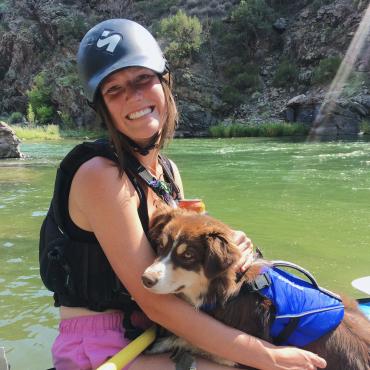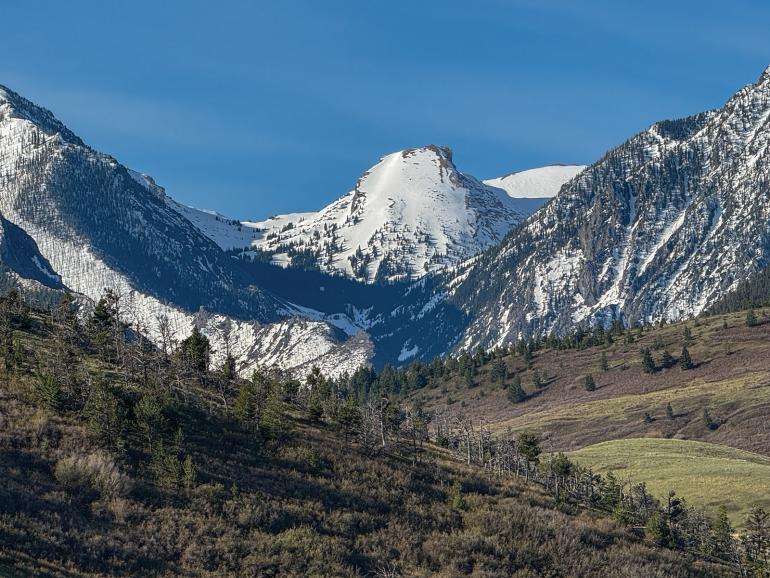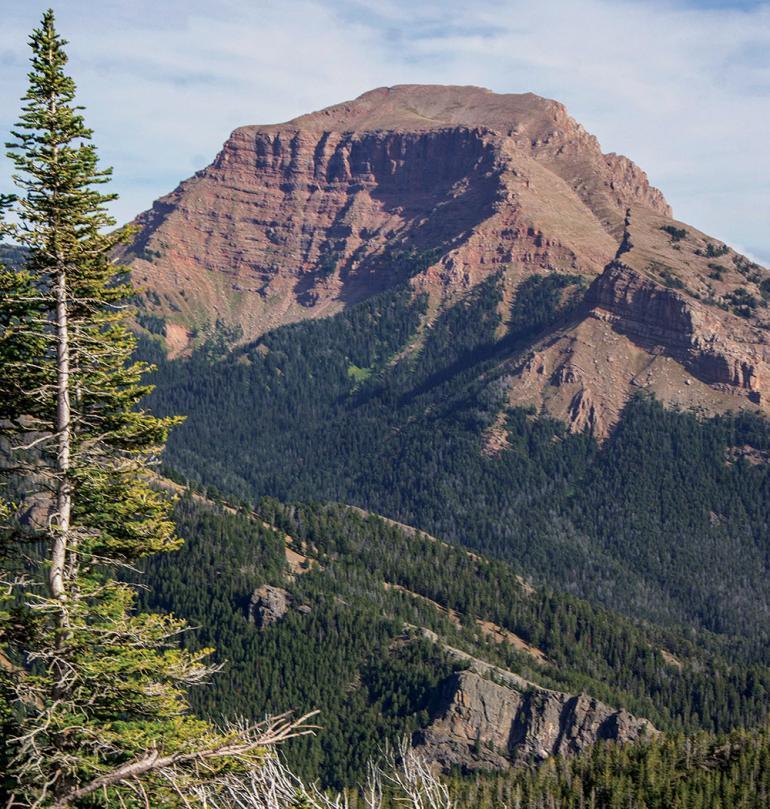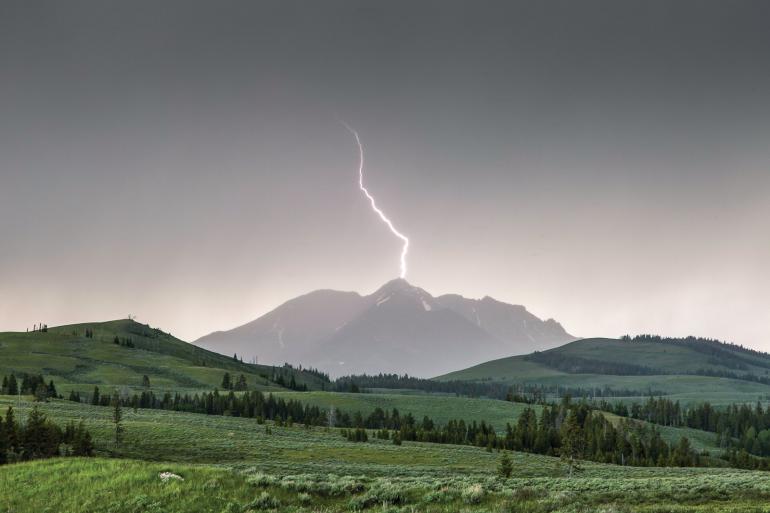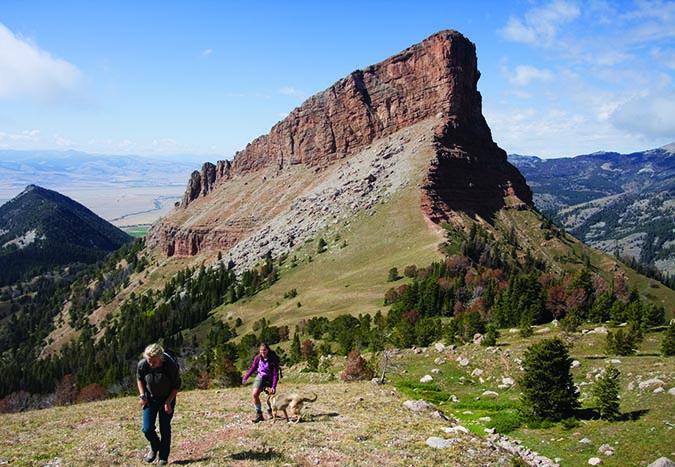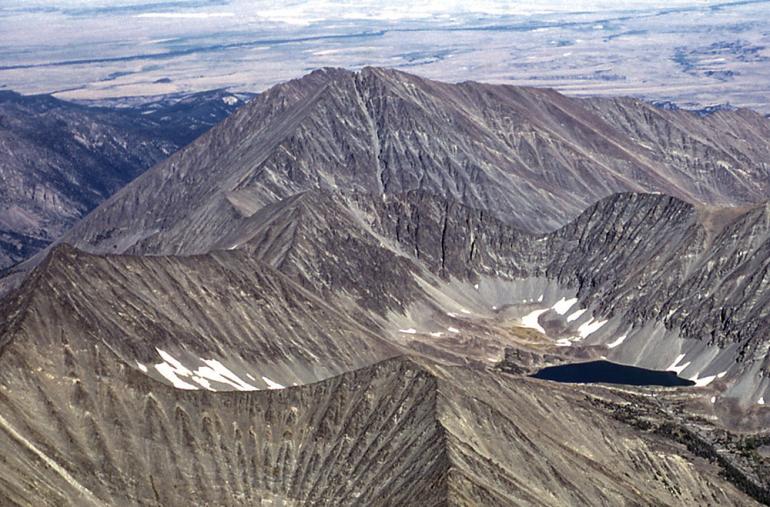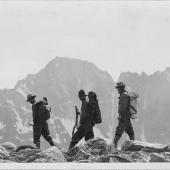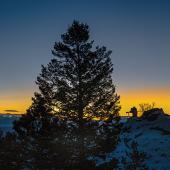Name Game
How local landmarks got their monikers.
Elephant Head Mountain
Tucked into the Absarokas near Livingston, Elephant Head earned its name for the obvious: from certain angles, its rocky layers of Bighorn dolomite look just like the head of an elephant.
Sphinx Mountain
Sphinx Mountain, looming in the Madison Range, is capped with a rare type of conglomerate rock—appropriately dubbed “Sphinx conglomerate.” The mountain’s name comes from its likeness to Egypt’s Great Sphinx of Giza when viewed from the north. The name (spelled “Sphynx” at the time) can be traced back to an 1886 topographic survey of the Three Forks quadrangle.
The Helmet
Next door to Sphinx sits the Helmet, named for its Spartan-helmet silhouette. This bold landmark rises like a watchman over the Madison Range, catching the eye of anyone with a love for myth, mountain, or both.
Tilly
In the Bridger Range, home of Hidden Gulley, “Tilly” refers to the summit on the ridge north of the helipad. Birdwatchers commonly refer to this peak as a reference when spotting raptors during the fall migration season. “Tilly” is a reference to Fred Tilly who spent four seasons there counting raptors in the early ’80s.
Electric Peak
The tallest summit in the Gallatin Range got its name the hard way: the Hayden Survey team of 1872 climbed it and were met with a surprise—crackling sensations and hairs standing on end. They dubbed it Electric Peak, and the name stuck—nature’s own warning sign.
Emigrant Peak
Rising over Emigrant Gulch and the Yellowstone River, this peak nods to the prospectors who flooded the area during the 1860s gold rush. Their dreams of fortune may have faded, but their legacy lives on in the name of this iconic Absaroka summit.
Naya Nuki Peak
As the local legend goes, Naya Nuki Peak honors a Shoshone girl who escaped captivity and traveled hundreds of miles back to her people. She is said to have been kidnapped at age 11, in the same raid as Sacagawea, by the Hidatsa. Naya Nuki peak sits beside Sacagawea Peak in the Bridgers, commemorating the bond between the two legendary women.
Sixteenmile Creek
No mystery here: Sixteenmile Creek flows into the Missouri River exactly 16 miles downstream from Three Forks. Abandoned in 1980, the Montana Railroad rail bed still remains in the canyon, above the stream, running back toward Maudlow.
Crazy Peak
At 11,214 feet, Crazy Peak is the tallest of the Crazy Mountains. The name has roots in Crow folklore: one version tells of a “crazy” frontier woman who lived alone in the mountains, consumed by grief after her family was killed. Another theory points to the range’s wild weather patterns. The Crow people call them Awaxaawippíia, usually translated as “Ominous” or “Bad Dream” mountains.

